The rebooted electric Hummer is an absurd vehicle, in some ways, but it’s an extremely well-executed absurdity.
How do you review a 5-ton electric truck that accelerates from 0 to 60 mph in about 3 seconds? No other vehicle on the market is even close to direct competition. And comparing it to mass-market EVs like the Ford Mustang Mach-E or Volkswagen ID.4 would be absurd.
To be fair, the 2022 GMC Hummer EV Edition 1 launch version doesn’t quite weigh 5 tons. It’s a mere 9,243 pounds, all of it propelled by three electric motors putting out a total of 746 kilowatts (1,000 horsepower) and powered by a battery of more than 200 kilowatt-hours capacity.
It’s also remarkably easy to drive, not to mention shockingly maneuverable due to its rear-wheel steering. With all four wheels angled, the big truck has a turning circle of 37 feet—or just 2.5 feet more than that of a Chevrolet Sonic subcompact.


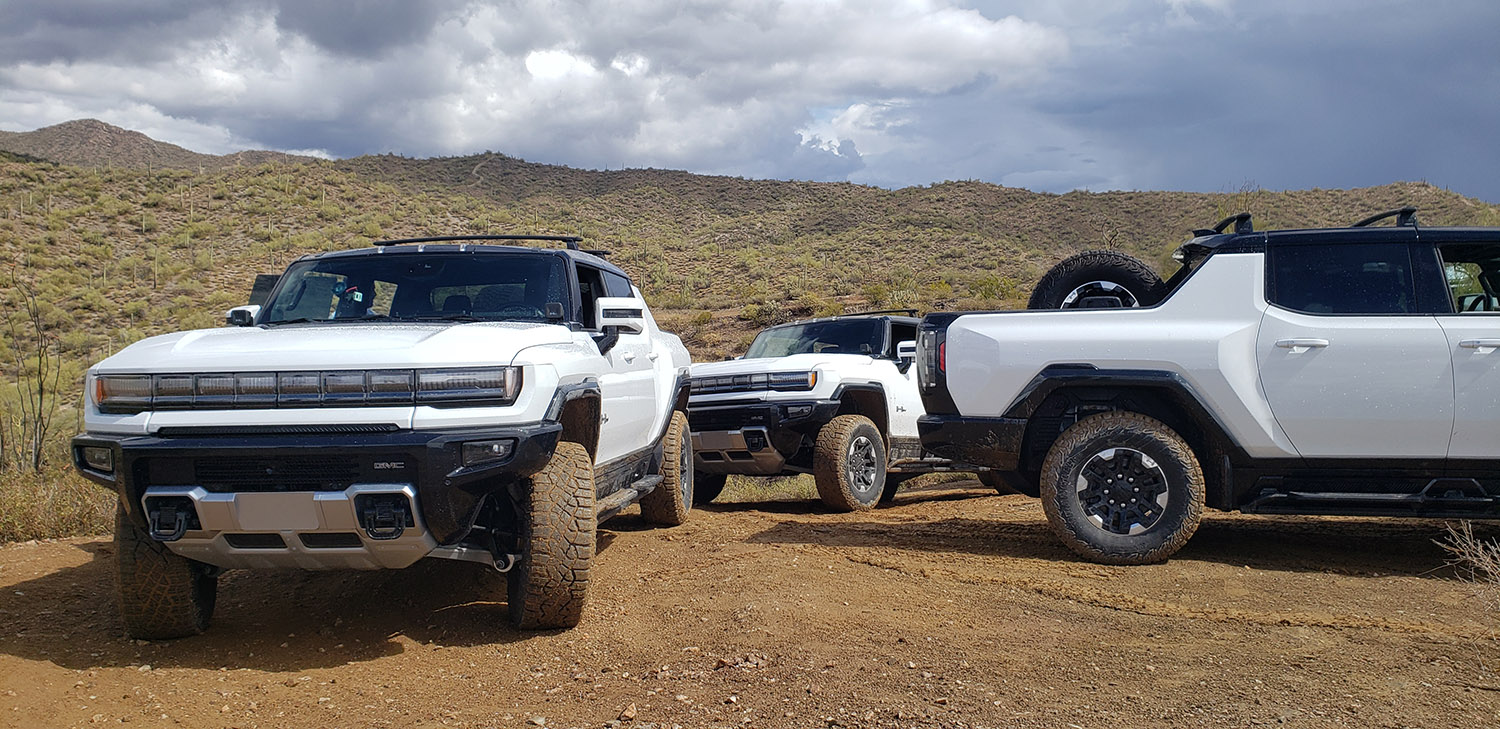

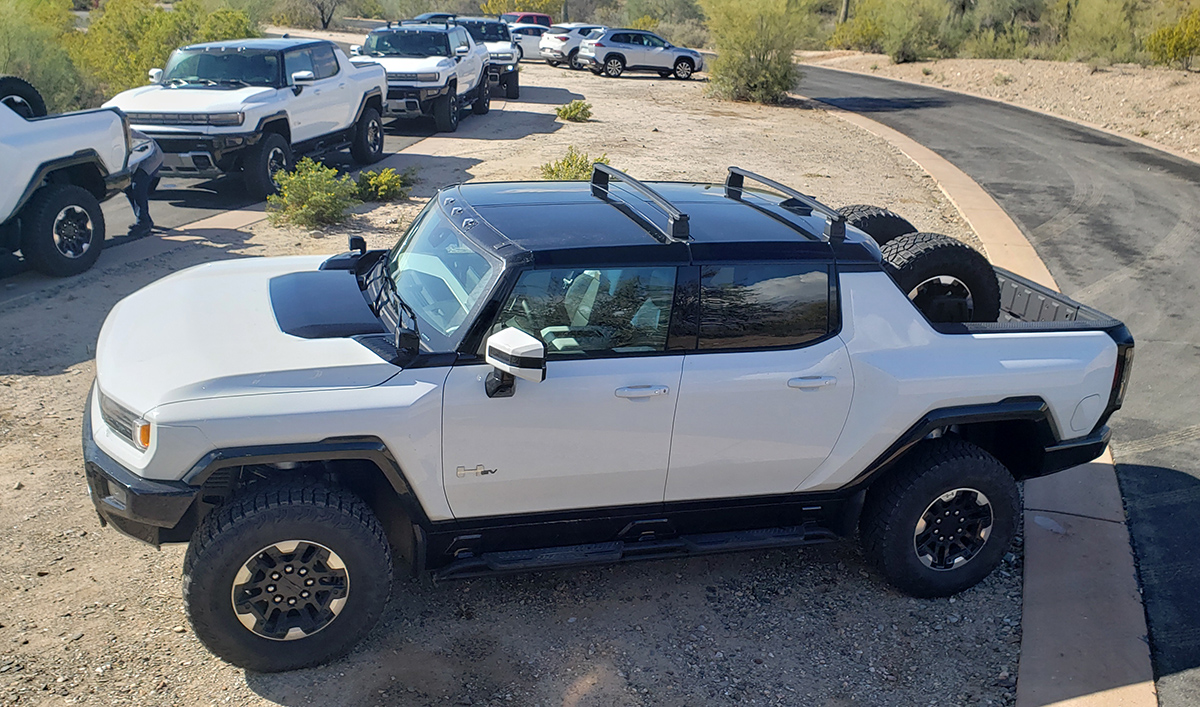

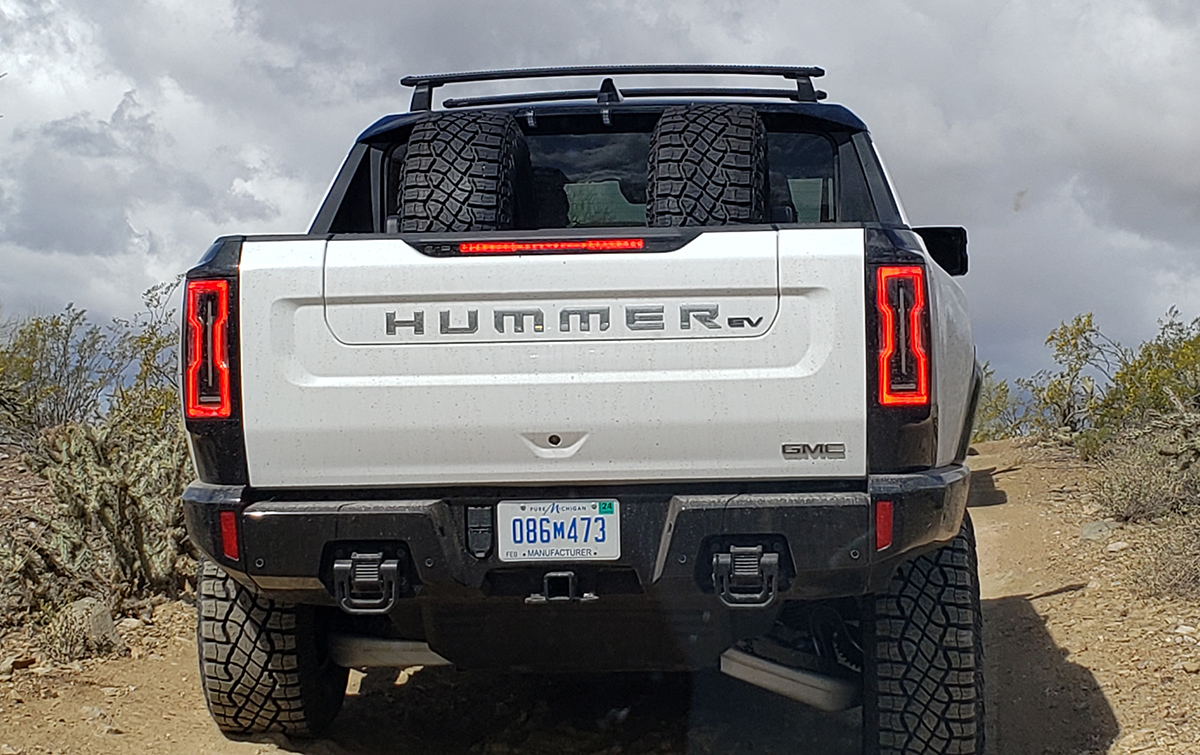

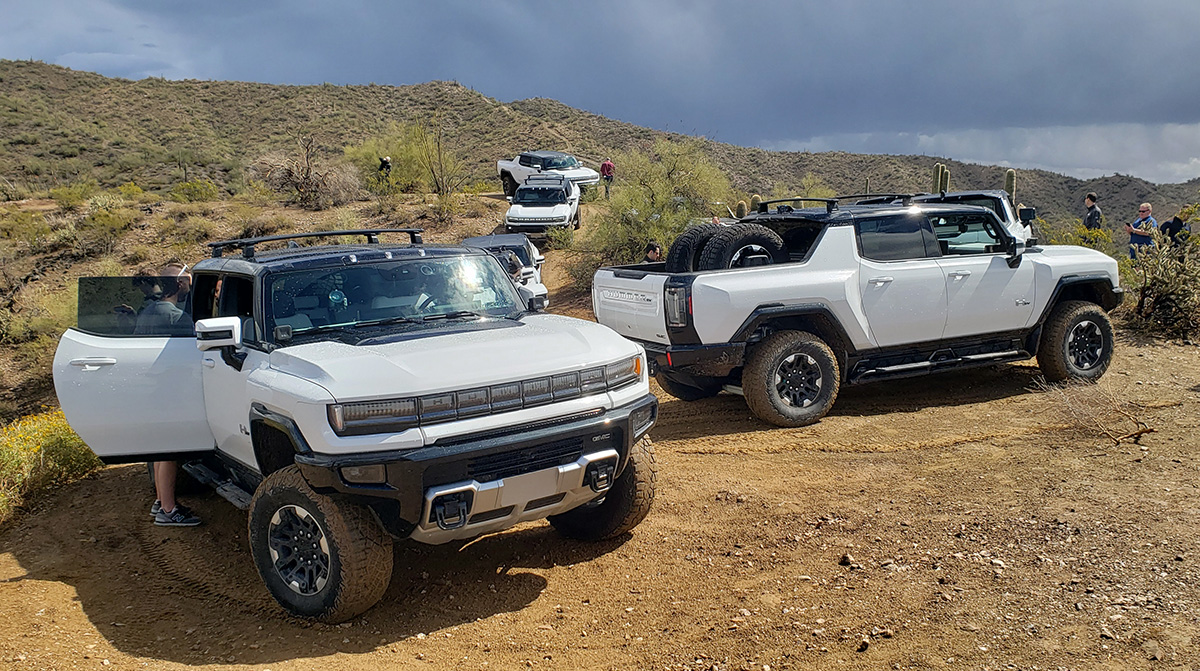

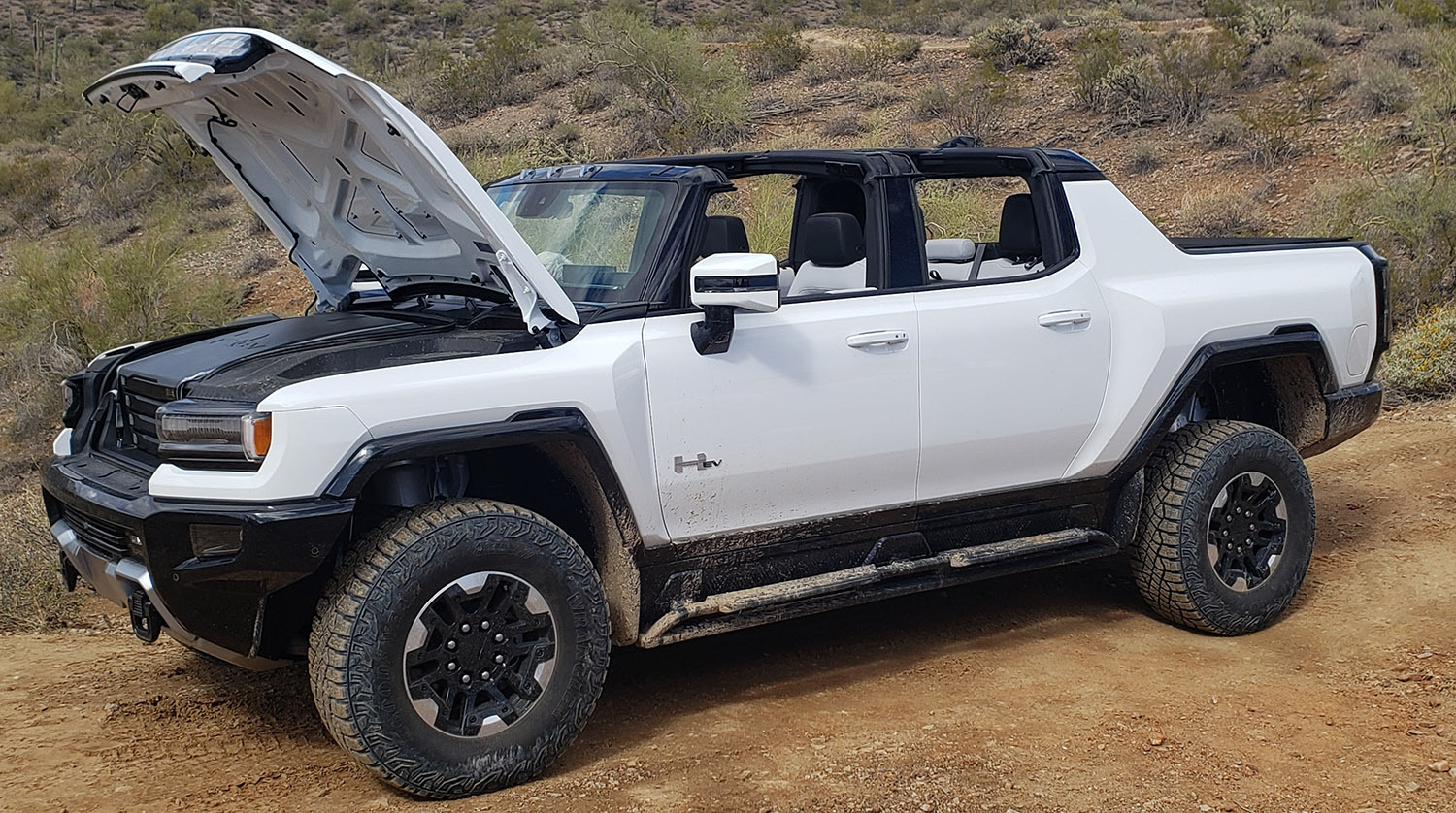

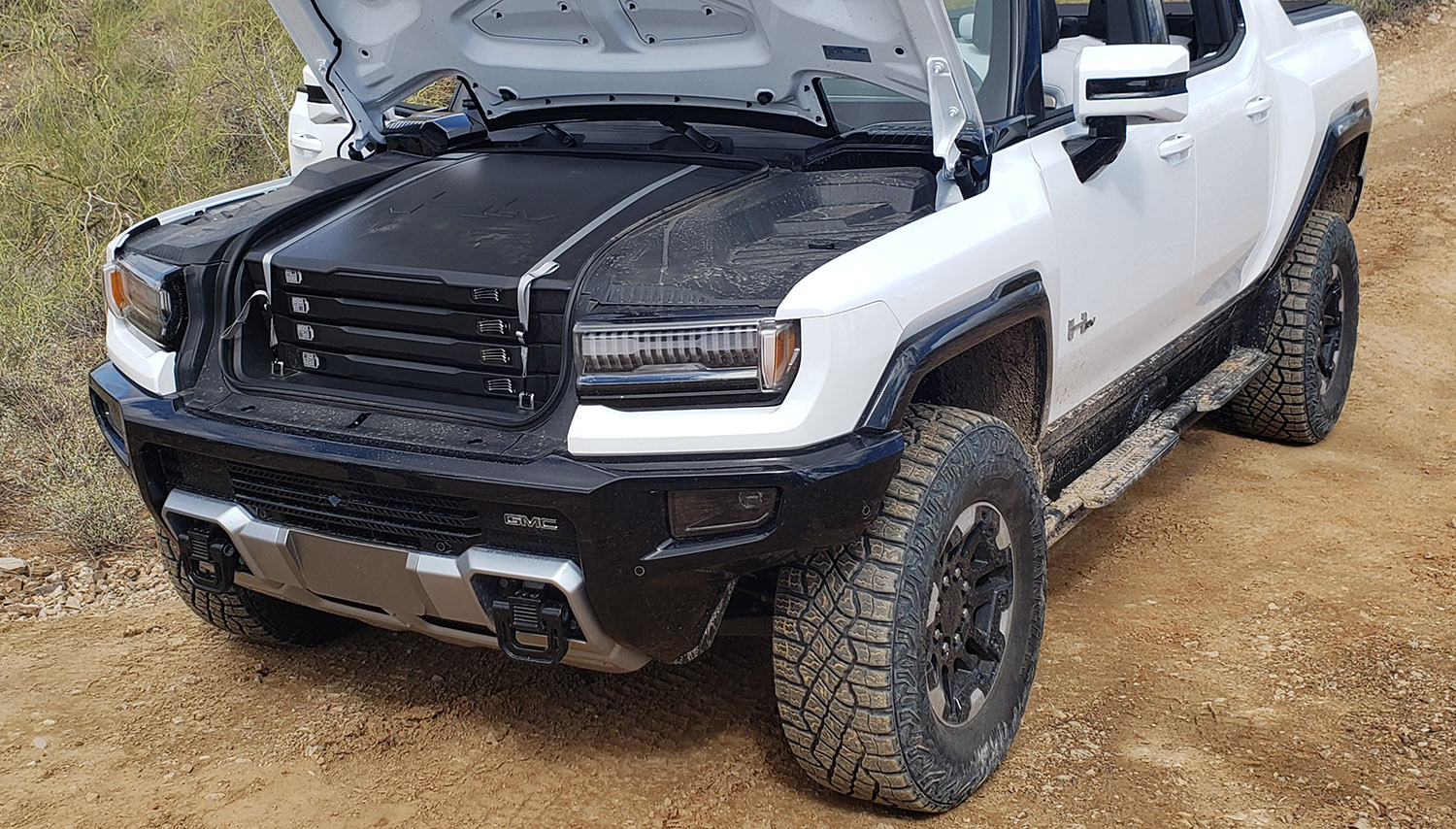

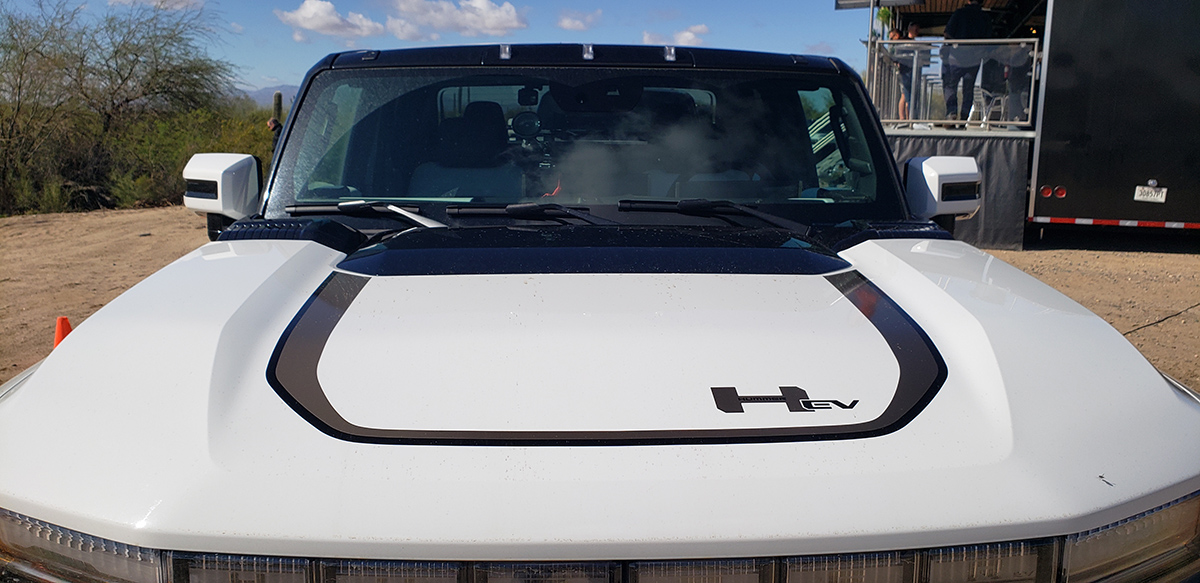

During parts of two days, we tested the electric Hummer in and around Phoenix, Arizona, both on roads and off. We climbed dirt roads, aimed the massive 35-inch tires through narrow trails and over rocks, reaching a mountain plateau only barely large enough to park a handful of Hummers. We tossed in substantial two-lane road and highway time as well, and tested the claimed recharging rates at an Electrify America fast-charging site.
Making EVs badass
We even experienced the so-called “Watts To Freedom” ultra-acceleration mode (WTF, get it? Get it?).that rockets the huge vehicle forward at an indicated 0.9G. To invoke that specific mode, drivers depress a switch for 5 seconds, floor both pedals, and wait for a flashing light in the dash. Then, remove foot from brake. On our test day, blowing dusty meant road conditions weren’t good enough to provide the maximum traction. Our 0-to-60-mph run came in around 3.5 seconds—still absurd for anything this big—and then, equally impressive, hard braking brought all those tons to rest in just 157 feet.
In the end, we’re left feeling GMC’s reboot of the polarizing Hummer brand for the 2020s has fully accomplished the mission we suggested 18 months ago: It made EVs badass.
The Hummer has clearly struck a chord among increasingly truck-focused U.S. drivers. To date, GMC has received 66,000 reservations for the all-electric pickup and the upcoming SUV version combined. That’s impressive, considering the old Hummer brand sold just 72,000 units among three different model lines in its best year (2007).
GMC only delivered 100 Hummers from December through March, but executives claim it will be in full production by the fourth quarter of this year. Causes have ranged from supply-chain issues to the truck’s very short development cycle of less than three years, plus a deliberately slow production start to ensure top quality from the start in launch versions priced north of $100,000.
Ultium debut: 200-kWh battery, 800-Volt charging
The Hummer EV is the first model from General Motors to use its new, high-volume Ultium electric architecture. Its battery can be viewed as a pair of Cadillac Lyriq packs stacked one atop the other, though GM has been peculiarly uninformative about its energy content: “We do not provide total capacity ratings,” GMC told us. A publicized pack capacity of 212.7 kWh is actually the energy used on the EPA driving cycle that rated the vehicle at 329 miles. Make of that what you will.
The Hummer’s high-voltage components largely operate at 400 volts, the traditional rate for which there’s already a large supplier base. But to provide faster on-road charging for the massive pack, GM battery engineers cleverly put a switch between the two halves of the pack. In the usual parallel mode, the packs combine for standard propulsion. But when the switch connects the packs in series, 800-volt charging at rates above 300 kilowatts is possible.








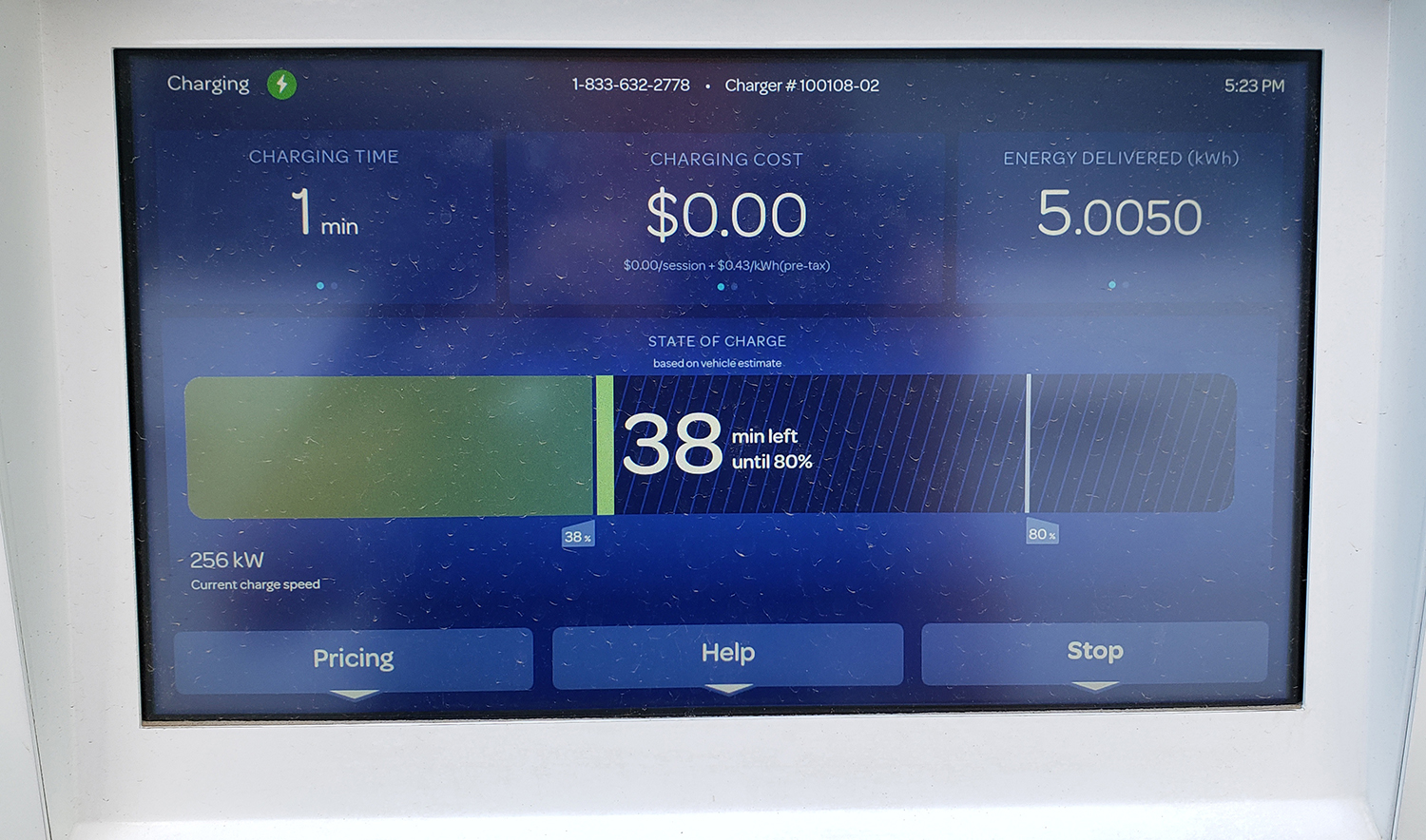

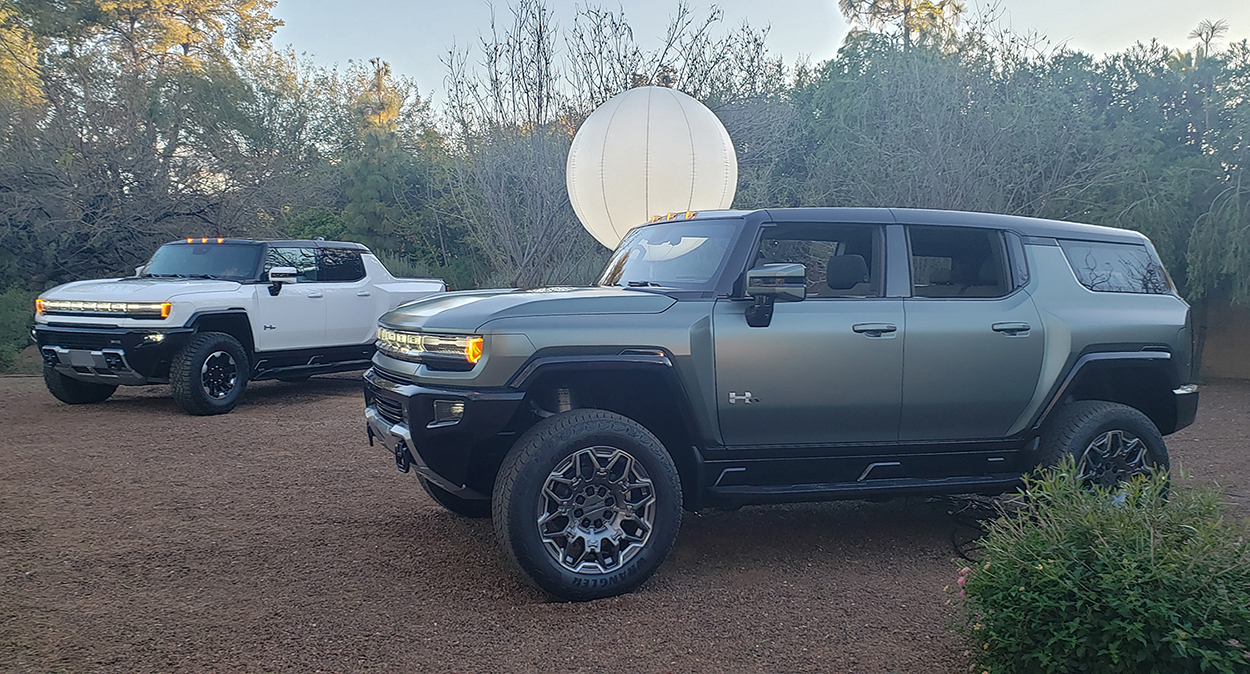

With the pack at 38 percent, we saw 256-kW charging from an Electrify America 350-kW station, but we’d expect that rate to be higher if the battery had less remaining energy. The portable charge cord has pigtails that connect to 120-volt household outlets or 240-volt NEMA 14-50 plugs at rates up to 7.6 kW.
The EPA rates the Hummer EV Edition 1 at 329 miles of range. Our test truck showed 1.1 mi/kWh over 241 miles of driving (including our 40-kWh recharge) that mixed trail and rock crawling with highway travel at Phoenix speeds. Based on the 213-kWh pack, we might expect real-world range to be closer to 240 miles, but we’ll wait to make that judgment until we get a Hummer for a longer road test.
On the road, at the mall
The most common question about the Hummer has been simply, “What’s it like to drive?” The answer is: more civilized than you’d expect, and a whole lot easier than we imagined.
The windshield is upright, wide but short, with three wipers. The door windows are frameless, with electric motors that tighten them into place when a door is shut or pull them slightly down as the door handle starts to open. If it’s raining, be warned the Infinity Roof has no rain gutters, and entering passengers may get a faceful of water as the door opens. (In more temperate conditions, all four glass roof panels not only remove but stack neatly into slots in the the front trunk—a clever touch.)
Climbing up into the cabin, driver and passengers settle into a design that mashes up 2020s high-tech with Off-Road Butch. The Hummer name was coined for the civilian version of a military vehicle, but the recast electric Hummer stresses off-road truck design cues more than overt military menace.
Drivers can choose between D and L modes on the rotary gear selector. D (Drive) gives a more traditional driving experience, while L (Low) provides maximum regenerative braking to allow one-pedal driving. For good measure, there’s also a Bolt EV-like Regen on Demand paddle behind the steering wheel on the left.
Unlike any other massive-tired 4 x4, the Hummer neither rides like a buckboard nor wanders on highways. It has four-wheel independent suspension, and tracks straight and true. In other words, it’s not as tiring to drive as other 4x4s. GMC confirmed it also has side-wind compensation built into the stability control, which explains why we felt no deviation during healthy gusts. We also discovered the rear-wheel steering—at speeds up to 25 mph—makes it possible to navigate the high, wide truck efficiently through shopping-center parking lots.
The latest version of GM’s Super Cruise adds automated lane changing to the hands-off adaptive cruise control functions that keep the car in its lane on the highway. Not only will it monitor traffic around it and safely change lanes when the driver taps the signal, it will also change back to the original lane once it’s passed the slower vehicle. The system monitors drivers’ eye movements to ensure they’re still looking toward the road ahead even if their hands are off the steering wheel. It’s a good system, with some abrupt endings: Super Cruise suddenly alerts the driver mapped roads have ended and it’s time to retake control right now (we’d prefer a little warning, thank you).
Off the road, up on the rocks
So the Hummer EV is fine for use on highways and in affluent suburbs by those people who care to drop $100K for a Very Large Truck that’s also electric, right? Yes, but there’s more.
It has two drive modes where its unique capabilities come into their own: Off Road and Terrain. The first is for covering dirt, sand, or rock trails at speeds up to perhaps 40 mph, while the second is for slow crawling (below 10 mph) on more challenging terrain. Those include the rockiest trails, where one of the gigantic tires may come completely off the ground, even with up to 13 inches of suspension travel (or 16 inches in the special Extract mode).
Terrain mode not only alters the accelerator mappings and wheel braking, it also increases the rear-steer angle 20 percent compared to the other modes, tightening its turn radius. Development engineer Mike Colville, who competes his own 4×4 in the off-road King of the Hammers race, pushed hard for 4WS early in development. His insistence paid off, on the trail and in tight spots generally. The Hummer also uses a traditional mechanical locking axle for the single front motor, along with an “e-locker” at the rear: electronic controls that lock the pair of motors that power the back wheels.
The multiple cameras showing views ahead, to the sides, and behind, plus a bird’s eye view that fused them together, make off-roading far easier. On sharp crests, it takes some training to watch the frontal view on the center screen while nothing but sky is visible through the windshield. But it clearly helps prevent dangerous mistakes.
Navigating 5 tons around tight mountain curves, with no shoulder at all and slick mud on the outside edge, seemed almost easy. It required vigilance—those cameras, again—but was helped by the Hummer’s very low center of gravity: just 693 mm (27 inches) above the ground, in an 81-inch-tall vehicle. Sure, those curves might have been easier in a smaller 4×4 like a two-door Jeep Wrangler. But there’s no electric Wrangler right now, is there?
Hummer execs pointed out that the truck and its tires were designed so there’s no need to “air down” or partially deflate them before hitting the trails. That’s good, because unlike the Rivian R1T mid-size electric pickup truck, there’s no onboard compressor to air them back up again.
Coming: less huge, more affordable EVs
With Hummers on the road, and Cadillac Lyriq luxury electric SUVs to follow within weeks, GM will now turn its attention to higher-volume EVs far more relevant to the mass of North American car buyers. These include not only the 2024 Chevrolet Silverado EV (aka ‘EValanche,’ after the four-door sport pickup truck sold 2002-2013) but more importantly, smaller, more affordable Chevrolet SUVs. Among them are the 2024 Equinox EV, with a promised starting price of $30,000 (for a low-end model at some future date), a Blazer EV, and more to come. (Expect an electric Buick too.)
The Hummer EV is the first of GM’s new electric vehicles. It may be the most noticeable, and it’s clearly the most outrageous. We didn’t expect to like it, frankly, but we did, because it’s very good at what it does. Even if what it does isn’t what many people do—and many Hummers will never see a dirt road or rocky trail.
One final note: Many bridges in rural and older areas of the U.S. are banned to vehicles weighing more than 3 tons. We asked GMC whether the Hummer’s navigation system avoided such routes, or if it warned owners the weight of their vehicle might exceed the strength ratings of some bridges. The response was no. GMC noted some 3500-series heavy-duty pickup trucks—including the luxury personal-use versions with leather upholstery and all the trimmings—can weigh even more.
“As with all DOT rules and regulations,” GMC wrote, “it’s the driver’s responsibility to adhere to them.” Hummer EV drivers: You have been warned.
GMC provided airfare, lodging, and meals to enable Charged EVs to bring you this first-person drive report. Photos by John Voelcker.



















































